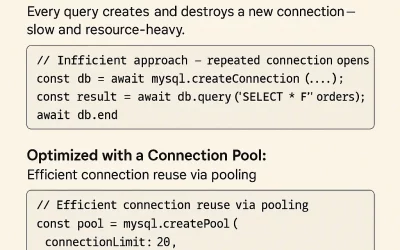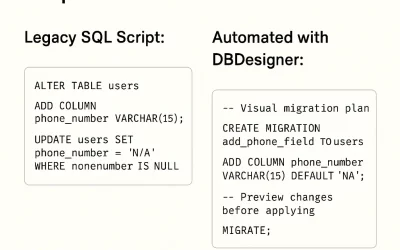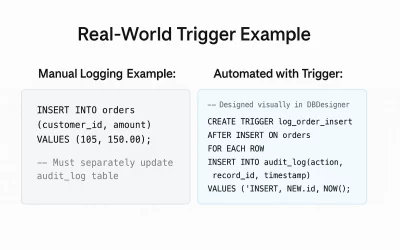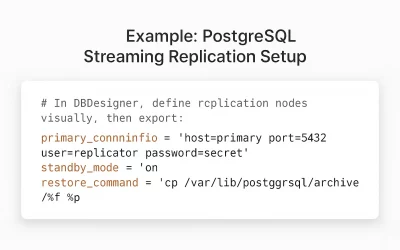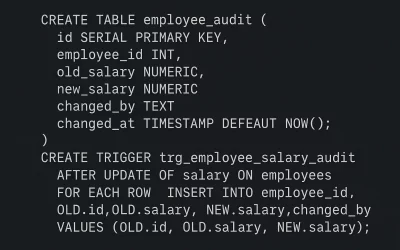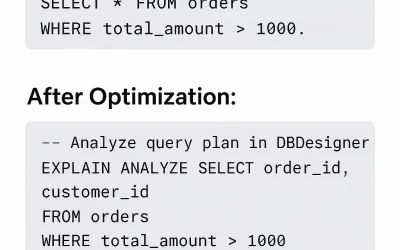Blog
Creating data champions, by giving people the ability to easily automate and manage a company’s entire data pipeline, to get answers instantly.
Mastering Database Connection Pooling: Boost Performance & Scalability in Modern Applications
Mastering Database Connection Pooling Database connection pooling is a scalability multiplier that dramatically improves the performance and stability of high-traffic applications. With modern visual database design tools, you can architect systems that maintain...
Mastering Database Migration Strategies: Seamless Schema Transitions with DBDesigner
Mastering Database Migration Strategies Database migrations are the backbone of evolution in modern systems — helping you move from legacy databases to scalable, cloud-native architectures. With DBDesigner's migration tools, developers can seamlessly transition...
Mastering Database Triggers: Automate Data Integrity and Workflows with DBDesigner
Understanding Database Triggers Database triggers are event-driven mechanisms that automate workflows inside your database. They execute predefined logic when specific events (like INSERT, UPDATE, DELETE) occur — ensuring consistency and reducing human error. With...
Database Replication & High Availability: Ensuring Reliability and Scalability with DBDesigner
Ensuring Reliability with Database Replication Database replication is the heartbeat of high availability — it keeps your data safe, synchronized, and accessible even when servers fail. With DBDesigner's collaborative design platform, you can visualize replication...
Database Auditing & Change Tracking: Ensure Data Integrity and Compliance
Ensuring Integrity with Database Auditing Database auditing is the silent guardian of data integrity. It records every change, access, and anomaly across your system, ensuring accountability and compliance. With DBDesigner's collaborative tools, database architects...
Database Performance Tuning: Boost Speed, Stability, and Efficiency with DBDesigner
The Art of Database Performance Tuning Database performance tuning is the secret weapon behind lightning-fast, reliable data systems. By fine-tuning configurations, queries, and schema structures using DBDesigner's intelligent modeling tools, developers can unlock...

